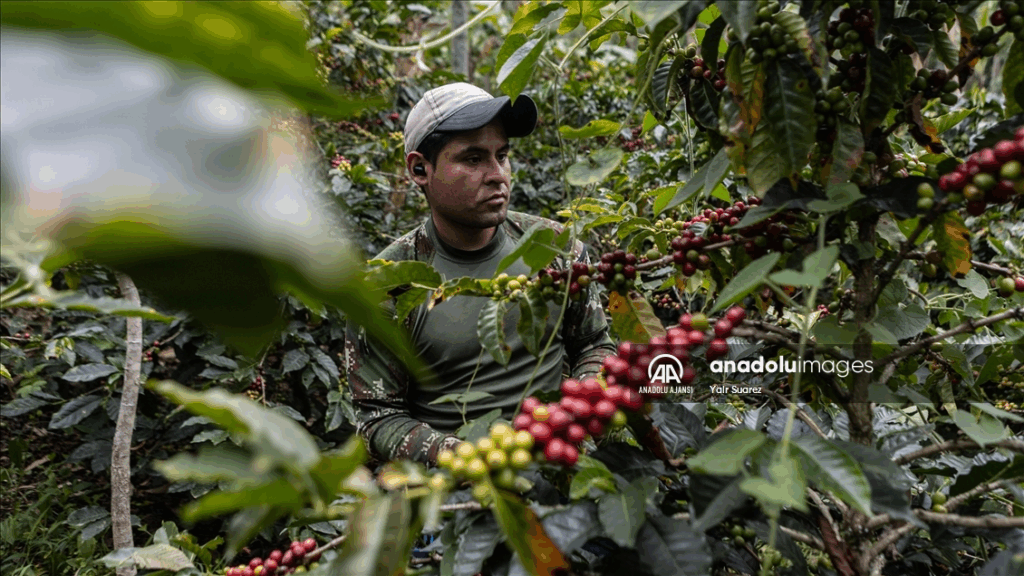Latin America dominates global coffee production, with Brazil and Colombia serving as the region’s leading suppliers. This article examines the critical role these two nations play in the coffee industry, the complex challenges threatening their harvests, and the sustainable strategies being implemented to safeguard the future of this vital crop.

The Foundation of Global Supply: Latin America’s Coffee Dominance
Brazil produces about one-third of the world’s coffee, solidifying its position as the largest producer globally (FAOSTAT), and giving its preeminent capacity to influence global coffee prices and availability. While Colombia does not match Brazil’s volume of production, it has built a solid reputation for quality and consistency, and is the world’s fourth largest producer, making it a key player in the global coffee market.
This leading position is not merely an agricultural statistic—it represents a vital socio-economic foundation. In Brazil, the coffee industry provides employment to hundreds of thousands of families, forming the economic backbone of many rural communities. The significance is also pronounced in Colombia, where coffee cultivation represents 8% of the country’s total exports and 12% of its gross domestic agricultural product (Colombian Coffee Growers Federation). The prosperity of the coffee sector is inextricably linked to Columbia’s economic stability and the well-being of its rural livelihoods.
A defining feature of this sector, particularly in Colombia, is the predominance of family farms. In Colombia, 96% of family farms have less than 5 hectares planted with coffee (Colombian Coffee Growers Federation). These small-scale operations have resulted in farmers being exceptionally vulnerable to crop losses and their ensuing economic consequences, highlighting the critical need for resilient and accessible farming solutions.

Multifaceted Challenges Confronting Coffee-Growing Regions
Coffee farms face mounting vulnerability. Latin America coffee production is besieged by challenges that threaten both yield and farmers’ livelihoods.
Rising global temperatures are fundamentally reshaping the coffee cultivation landscape. The changing climate is shifting pest and disease cycles, making traditional management methods less effective. Farmers are finding that existing treatments may no longer suffice. Crucially, rising temperatures are enabling devastating pests and diseases to migrate to higher altitudes—regions that were previously unaffected by these threats.
Two primary pest and disease threats pose existential risks to the industry:
- Coffee Leaf Rust (Hemileia vastatrix): This fungal pathogen severely debilitates plants and causes substantial yield losses, with severe outbreaks recurring across the region. Warmer temperatures accelerate the organism’s development cycle, intensifying the damage it inflicts.
- Coffee Berry Borer (Hypothenemus hampei): This tiny beetle is devastating coffee crops in Colombia, laying eggs inside coffee cherries and destroying them from within. The scale of infestation is alarming, as 75% of Colombian coffee crops are affected, directly imperiling farmers’ livelihoods (CABI).
Coffee production is often linked to deforestation and other environmental issues, prompting a critical reassessment of practices and fueling grower demand for proven sustainable products. Furthermore, evolving consumer preferences, including a growing demand for organic coffee, are pushing producers to transform their cultivation methods.

As Raiane Santos, an Agronomy Engineer at Veloso Green Coffee in Brazil, explains, the challenge requires a sophisticated response: “The main challenges are adapting management with registered and tested mechanisms of action that demonstrate effective control. Furthermore, it is necessary to integrate various management approaches, for example, combining biological management with chemical control and the use of genetically improved varieties. To achieve this, well-executed field monitoring is crucial, and action based on monitoring results is swift and effective. “
A Paradigm Shift: Evolving Pest Control and Sustainable Practices
In response to these mounting pressures, a profound transformation is underway in agricultural input recommendations and farming practices, as the era of relying exclusively upon broad-spectrum chemical solutions is yielding to a more integrated, ecological, and precise approach.
Raiane outlines their shift: “Many changes have occurred in recent years. The use of biological pesticides, physiological products, and less environmentally harmful agricultural inputs has increased. For example, neonicotinoids (imidacloprid, thiamethoxam), organophosphates, pyrethroids (cypermethrin and deltamethrin), organochlorines, fipronil, products with mechanisms of action that affect the lives of bees and biological control insects, molecules with long residual periods in the soil, and general agricultural inputs that affect many species are no longer used. The use of organic fertilizers and green manure crops has also been prioritized.″
To mitigate the risk of disease, agronomists like Sebastián Velázquez, who manages La Cumparsita farm in Colombia, prioritize plant nutrition and biodiversity. Sebastián explains, “If a plant is well-nourished, it develops characteristics that make it more resistant. Just like malnourished humans are more vulnerable to diseases, it’s the same for plants.” Sebastián has also introduced complementary crops, including cacao and banana trees, which stabilize the microclimate and improve soil health (Mongabay).

A Case Study for Sustainability: The Green Coffee Company Model
Gustavo Gómez, Chief Sustainability Officer at Green Coffee Company (GCC), illustrates how large-scale operations can drive sustainable adoption. GCC operates in Colombia, specifically in the department of Antioquia, managing largest sustainable Arabica coffee company in America with over 4,000 hectares of land—approximately 2,000 hectares in productive cultivation and 1,000 hectares of protected forest. Their processing facilities have a capacity of approximately 750,000 kg of cherry coffee, with a supply chain encompassing around 1,300 small, medium, and large coffee suppliers and 500 employees.
GCC’s demonstrated strategy for driving sustainable practices rests on two pillars: technical assistance and rural extension, coupled with sourcing and production. Through these approaches, the company has developed what is known as landscape utilization, creating territorial synergies that have enabled certification under international product standards, including the Rainforest Alliance, Fair Trade, Carbon Positive, Non-GMO, and EUDR.
Gustavo identifies three primary needs of Colombian coffee farmers: access to quality goods and services, guaranteed purchase, and transparency in the coffee grading process. GCC addresses each directly through targeted programs. Their cherry purchasing program allows farmers to concentrate exclusively on cultivation, while GCC handles processing, resulting in more efficient water use and better quality classification. Additionally, their G+ (plus) loyalty program delivers personalized, farm-specific technical assistance, deploying expert teams directly to growers to strengthen production “from the source with the best sustainability practices”.

Looking Forward: The Path to Sustainability
To address the multifaceted challenges confronting coffee production, Brazil and Colombia are promoting sustainable coffee production. The evolution is ongoing, as Gustavo observes: “Evolution is constant, as market regulations/authorizations lead to the replacement of chemical products with biological ones.” The increasing emphasis on traceability throughout the production chain—from cultivation through processing, export, roasting, and distribution—reflects growing consumer demand for transparency and accountability. Ultimately, as Gustavo notes, “everything that is done with the product is reflected through regenerative agriculture, certified products, and responsible practices throughout the supply chain.”
The coffee industries of Brazil and Colombia stand at a critical juncture. The challenges are formidable: climate change, pest pressure, and the imperative of environmental stewardship. Yet the response from farmers, agronomists, and companies demonstrates adaptability and innovation. By embracing integrated pest management, prioritizing plant nutrition, investing in farmer support systems, and committing to certified sustainable practices, these nations are forging a path toward a more resilient coffee future—one capable of sustaining both the environment and the livelihoods of the countless families who depend upon this vital crop…
By Joyce Wang,
Source: AgroNews
 THE GLOBAL WINDOW OF TURKISH FOOD AND AGRICULTURE The Global Window of Turkish Food and Agriculture Sector
THE GLOBAL WINDOW OF TURKISH FOOD AND AGRICULTURE The Global Window of Turkish Food and Agriculture Sector








